Directional tuning of single motor units
- PMID: 9763483
- PMCID: PMC6792838
- DOI: 10.1523/JNEUROSCI.18-20-08402.1998
Directional tuning of single motor units
Abstract
The directional activity of whole muscles has been shown to be broadly and often multimodally tuned, raising the question of how this tuning is subserved at the level of single motor units (SMUs). Previously defined rules of SMU activation would predict that units of the same muscle (or at least of the same neuromuscular compartment) are activated homogeneously with activity peaks in the same "best" direction(s). In the present study, the best directions of SMUs in human biceps (both heads) and deltoid (anterior, medial, and posterior portions) were determined by measuring the firing rate and threshold force of units for recruitment during isometric force ramps in many different directions. For all muscles studied, neighboring motor units could have significantly different best directions, suggesting that each muscle receives multiple directional commands. Furthermore, 17% of the units sampled clearly had a second-best direction, consistent with a convergence of different directional commands onto the same motoneuron. The best directions of the units changed gradually with location in the muscle. Best directions did not cluster into separate groups, thus, not supporting the existence of clearly distinguished neuromuscular compartments. Instead, the results reveal a more gradually distributed activation of the biceps and deltoid motoneuron pools. A model is proposed in which the central control mechanism optimizes the fulfillment of the continuously changing directional force requirements of a movement by gradually recruiting and derecruiting those units ideally suited for the production of the required force vector at any given time.
Figures
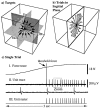
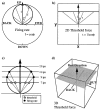

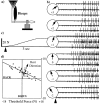





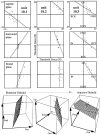


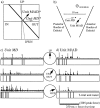
References
-
- Buchanan TS, Almdale DPJ, Lewis JL, Rymer WZ. Characteristics of synergic relations during isometric contractions of human elbow muscles. J Neurophysiol. 1986;56:1225–1241. - PubMed
-
- Buneo CA, Boline J, Soechting JF, Poppele RE. On the form of the internal model for reaching. Exp Brain Res. 1995;104:467–479. - PubMed
-
- Carrasco DI, English AW. Parts of cat biceps femoris produce different mechanical actions about the ankle and knee. Soc Neurosci Abstr. 1997;23:2097.
Publication types
MeSH terms
Grants and funding
LinkOut - more resources
Full Text Sources
